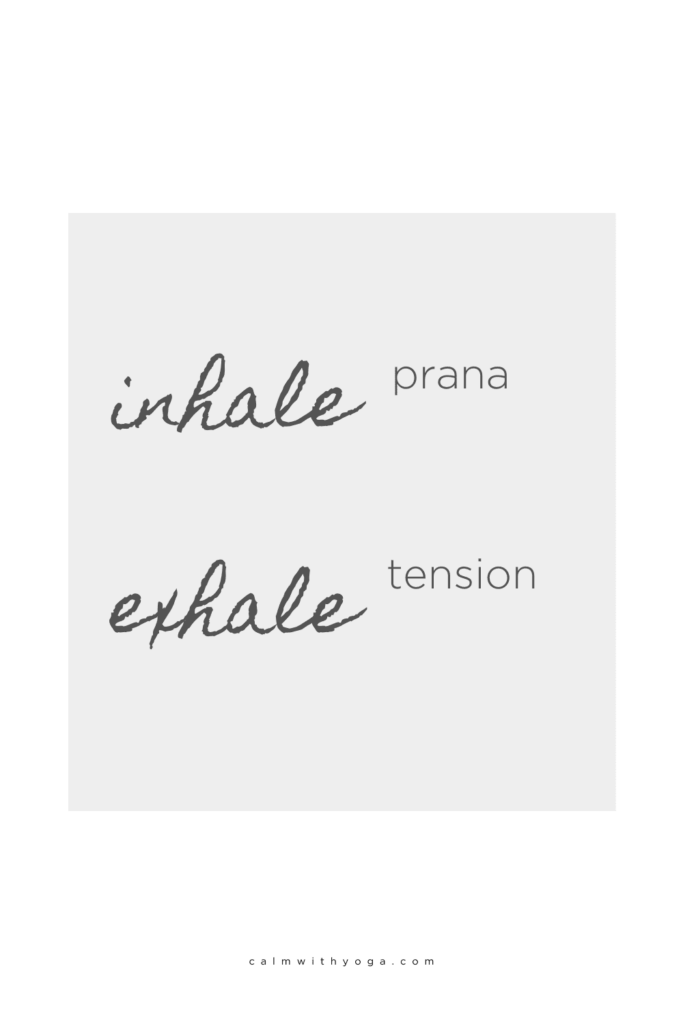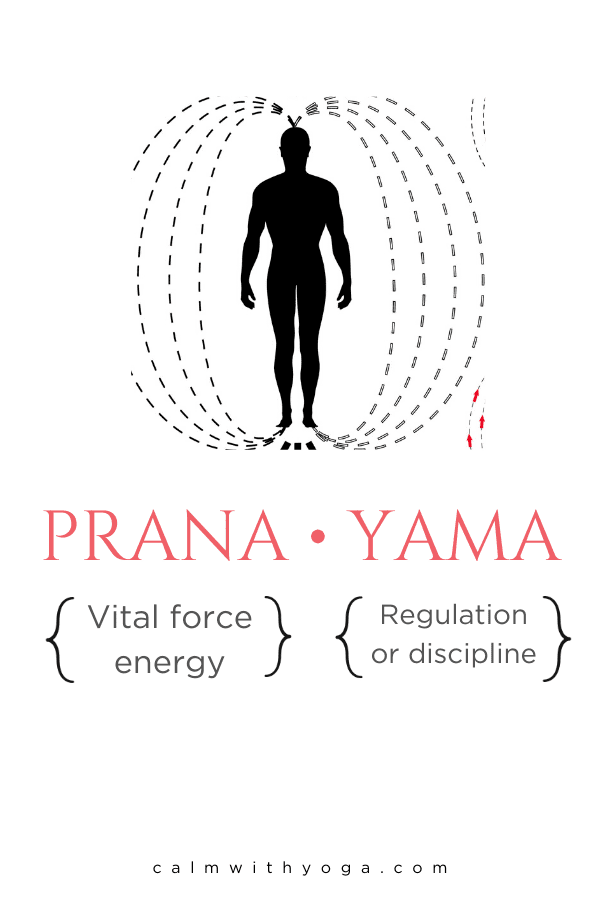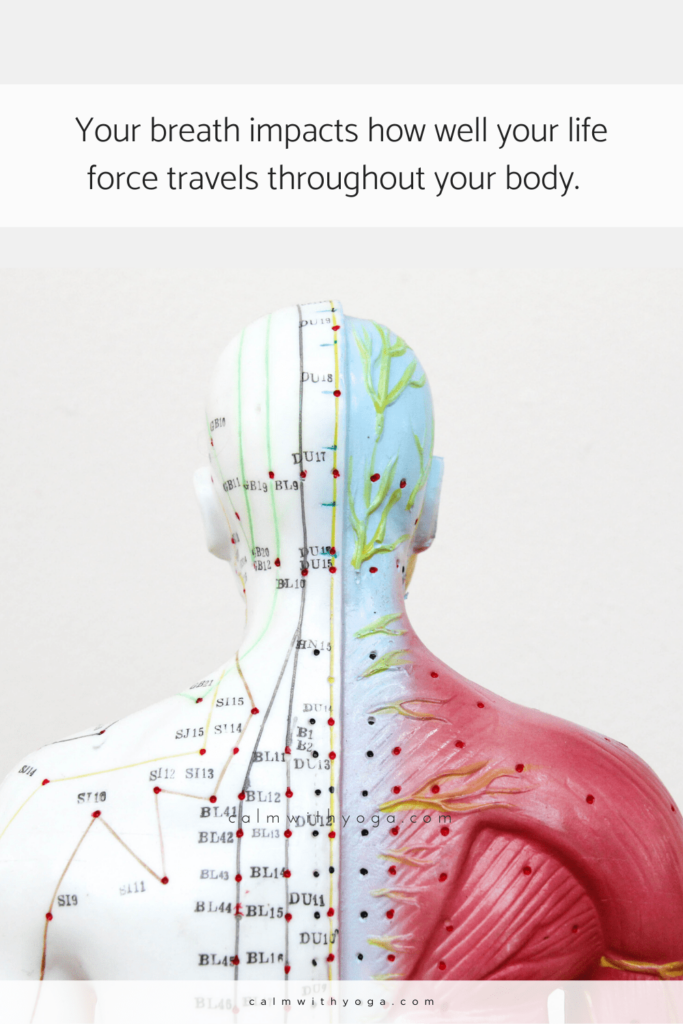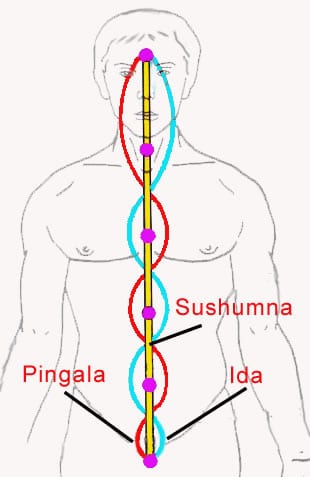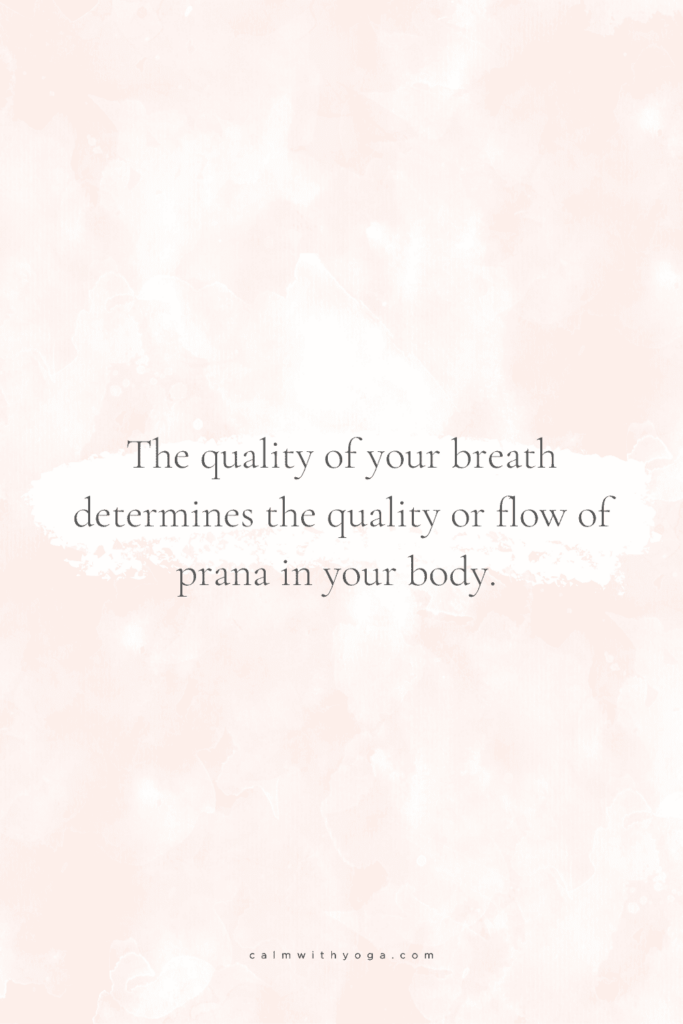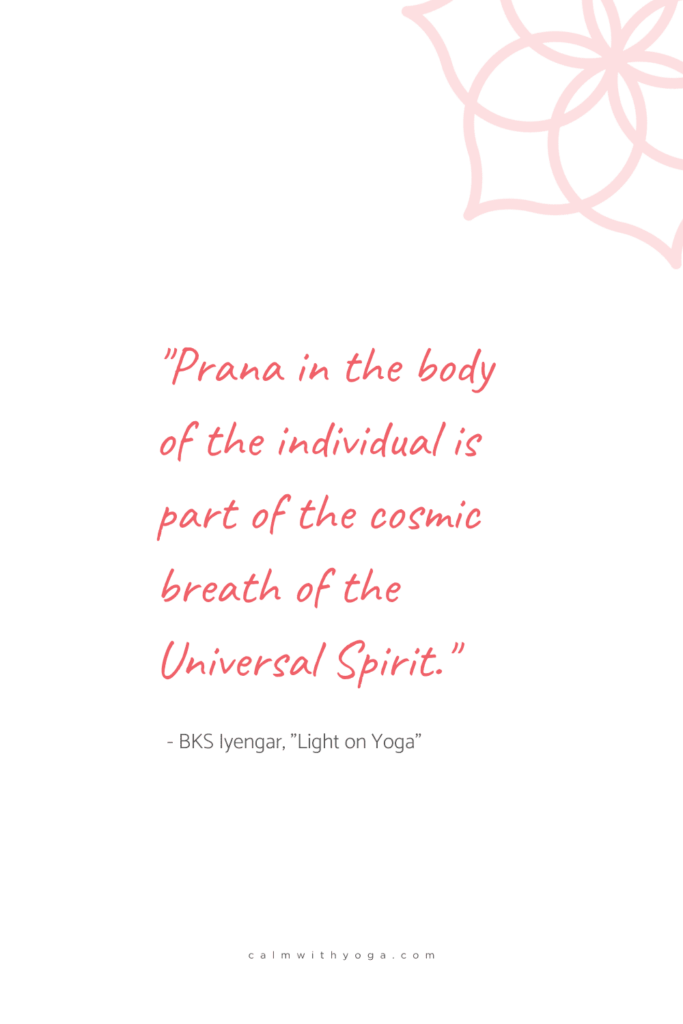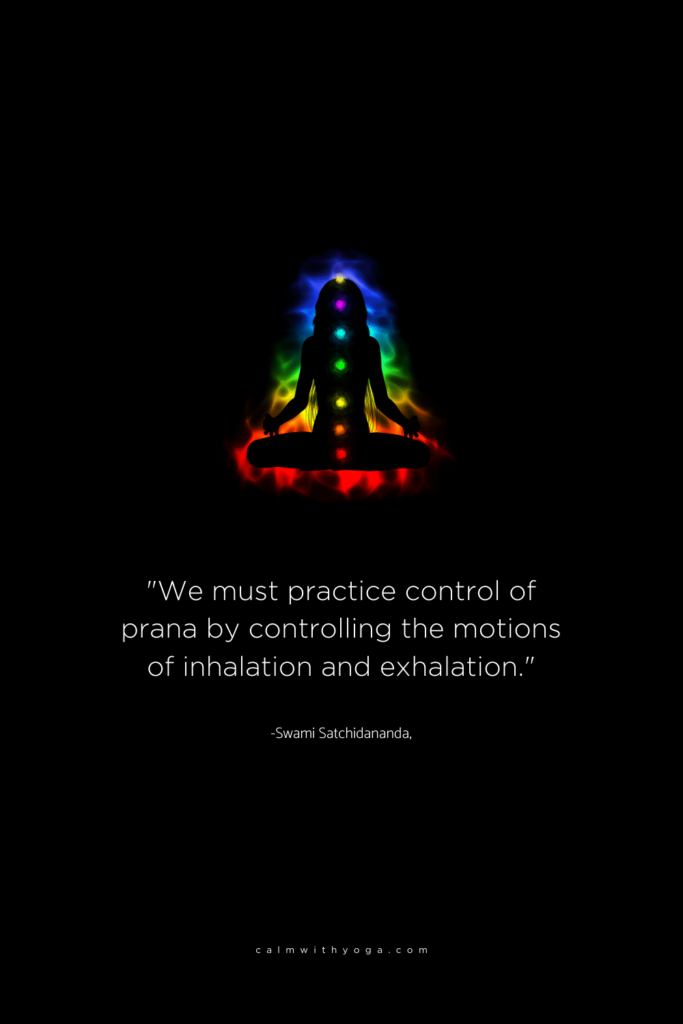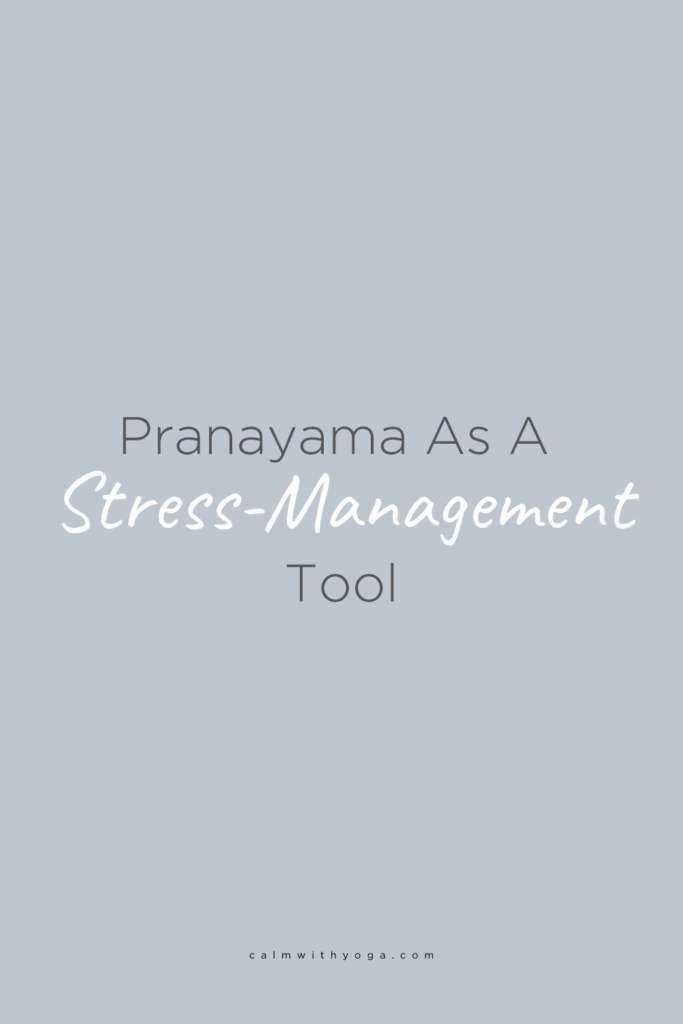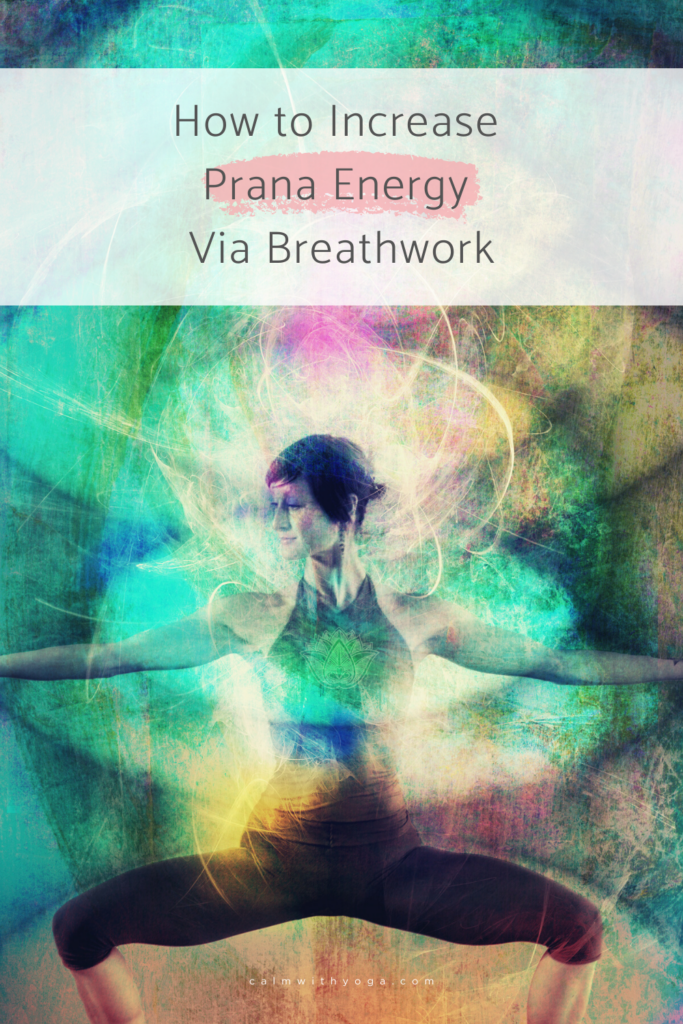The in breath fans and fuses the two opposing elements of nature − fire and water − so that a new, bioelectrical energy, called prana, is produced. Prana neutralizes the fluctuations of the mind and acts as a springboard towards emancipation. Pranayama stores prana in the seven energy chambers, or chakras, of the spine, so it can be discharged as and when necessary to deal with the upheavals of life. – B.K.S. Iyengar, Yoga Teacher & Author
Yogic sages and practitioners have known this for thousands of years. They knew that everything is essentially made up of life force energy; that everything we can perceive through our senses is infused with universal life force. Yogic breathing exercises are powerful because if you can learn to control your breath, you can begin to optimize the flow of life energy in and throughout your physical body. When vital energy (prana) flows freely and unrestrictedly throughout the body, there is physical, mental, and emotional health and wellbeing. You become more resilient to stress, your energy levels rise, as does your inspiration, creativity, and intuition. Let’s take a closer look at how this all works…
Pranayama As a Stress-Management Tool:
Pranayama is the practice of ancient yogic breathwork technology. It’s used as an effective tool for self-regulation, and the cultivation of mental, emotional, and physical health by enhancing prana energy flow. A regular, consistent pranayama practice offers a vehicle through which you can manage your stresses, emotions, thoughts, moods, and energy much more efficiently – without having to resort to anything or anyone on the outside. The Sanskrit word ‘pranayama’ literally translates to ‘the regulation of prana (vital force energy) via breath control.’ Pranayama techniques have the power to help you detox and cleanse yourself of stagnant energy in order to increase mental energy, physical stamina, and spiritual understanding.
What Exactly Is ‘Vital Force Energy’ Or Prana?
Henri Bergson coined the term ‘Élan vital’ to describe the creative force that makes the development of organs and the form of living organisms possible. [1] This constant motion commences in the human being as soon as he is conceived in his mother’s womb. Prana is therefore a type of energy responsible for the body’s life, heat and maintenance. – Swami Satyananda Saraswati, Yoga teacher & author Translated from French, it means ‘vital force’ or ‘vital impulse of life.’ Bergson believed that all living things are held by this principle. Vital Force Energy is known as Chi energy in Traditional Chinese Medicine. Like the word ‘prana,’ ‘chi’ is literally translated to “air” or “breath” in English, and is believed to be the invisible life force that animates all living organisms. Élan vital, prana, and chi are all different names for the same concept of ‘Breath of Life.’ Yogic teacher and author Swami Satchidananda likens prana to an energy fuel similar to that of gasoline and electricity:
Prana & Your Body:
We must practice control of prana by controlling the motions of inhalation and exhalation… Prana is the cosmic force without which nothing moves or functions. As gasoline, it moves the motorcar. As electricity, it radiates light through a bulb. Even our thoughts are moved by prana. By regulating the prana, we regulate our minds, because the two always go together. If one is controlled, the other is automatically controlled as well.” (2)
The quality of your breath determines the quality or flow of prana in your body.
If your breath is stagnant, irregular, short and shallow due to chronic stress, anxiety, and fatigue, prana will not flow optimally through your body. This means that your bodily function will be compromised and your organs, tissues, and cells won’t be operating at full capacity. Fortunately, this can be addressed and improved through a regular pranayama practice, which I’ll teach you how to do by the end of this piece.
Yogis believe that pranic energy flows through the channels (nadis) in our body – delivering life energy to each of our seven energy centers (chakras) as well as our organs, nerves, blood vessels, etc. There are three main channels (nadis) through which prana flows, and when flow is clear and unobstructed kundalini energy is released in the individual. They are: Ida nadi – the left channel representing feminine energy within. Pingala nadi – the right channel representing the masculine energy within. Shushumna nadi – the central channel through which Kundalini energy moves up.
There are different ways to awaken kundalini and increase pranic waves with us. Breathing exercises are one way. In Hatha Yoga, the physically focused practice of yoga, it’s done through asana (postures) practice. Qi gong is another way to increase prana (chi, qi) energy. Reiki, the Japanese practice of hands-on healing is another way.
Yoga instructor and physiotherapist Simon Borg-Olivier describes this cultivation of prana as ‘making yoga happen in the body’:
Connections come through the channels in our body, which in Yoga they call nadis. And what moves through these channels is energy and information, which in Yoga they call prana and citta. But physically, these channels are blood vessels, nerves, lymphatic vessels, acupuncture meridians just to name the main ones. And prana is things like heat, electrical, electromagnetic, electrochemical energy running through the different channels in the body. And also energy-carrying molecules like glucose, and ATP (adenosine triphosphate)… And so physically and energetically we have energy and information flowing through the body. To enhance the flow of energy and information through these channels in the body – that’s the most important thing… to make yoga happen in the body.” [3] In his book ‘The Breath of Life: Integral Yoga Pranayama,’ Swami Satchidananda explains how it is via our controlled breath that we are able to inject more prana and more life into every cell in the body, which boosts our immune system and internal strength:
A Pranayama Exercise For Increasing Energy, Calming Emotions, Managing Stress, & Increasing Resilience:
You supercharge the blood with extra oxygen… Oxygen is life, so that means you are enriching your blood with a lot of life. And not only do you take in more oxygen but along with the air, you take in more prana. Every cell of your body vibrates with new life.” [4] You’re about to learn a powerful pranayama exercise used to activate prana in the body. This exercise helps optimize the circulation of prana in every organ, tissue, and cell. As we have seen, when the body is strong and balanced, you experience:
more energy and less fatigue calmer emotions more resilience to effectively face the stresses and challenges of everyday life
This technique is so powerful that even Hillary Clinton swears by it! She used this pranayama to help her cope with the stresses of the presidential campaign and the subsequent loss. [5] It’s called Nadi Shodhana Pranayama (‘subtle energy clearing breathing technique’), and is commonly known as Alternate Nostril Breathing. Studies on the effects of regular Nadi Shodhana practice show that:
It helps activate the parasympathetic nervous system and increases the calming/ relaxation/ regeneration response in the body. [6] Appears to have a balancing effect on the functional activity of the left and right brain hemispheres. [7] Reduces high blood pressure while possibly improving performance and concentration. [8] It may improve respiratory and circulatory functions. [9]
Now let’s get right down to it.
Watch the video below for guided instruction on Nadi Shodhana and practice along with me:
Resources: [1] https://www.merriam-webster.com/dictionary/%C3%A9lan%20vital [2] Satchidananda, Swami (2012-10-24). The Yoga Sutras of Patanjali: Commentary on the Raja Yoga Sutras by Sri Swami Satchidananda. Integral Yoga Publications [3] http://uplift.tv/2017/watch-science-behind-yoga/ [4] Satchidananda, Swami (2015-10-12). The Breath of Life: Integral Yoga Pranayama: Step-by-Step Instructions in the Yogic Breathing Practices. Integral Yoga Publications. [5] https://www.youtube.com/watch?time_continue=47&v=Y0HE9Cav4kk [6] https://www.ncbi.nlm.nih.gov/pmc/articles/PMC3681046/ [7] http://www.sciencedirect.com/science/article/pii/0167876084900175 [8] https://www.ncbi.nlm.nih.gov/pmc/articles/PMC3628802/ [9] https://www.researchgate.net/publication/23168383_Effect_of_alternate_nostril_breathing_exercise_on_cardiorespiratory_functions
